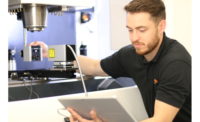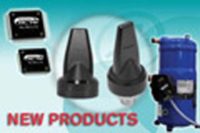Why talk about calibration system implementation? Isn’t it enough to focus on comparing equipment and software feature lists? The reason is that a calibration system implementation is only about 20 to 30% technology; the rest is culture and process. Calibration system implementation is also very time-and resource-consuming—the risk of failure is high. Typically, it involves many different functions and departments within an organization and takes time to complete. To ensure a high quality, sustainable calibration system, there are some important aspects to consider and common pitfalls to avoid during implementation.
Why implement a new calibration system
Historically, calibration systems consisted of pen and paper based manual recordings using single function calibrators. Today, it is possible to streamline processes electronically, by using documenting calibrators and calibration software, to go totally paperless. An efficient, modern, automated, software-based calibration system, and related processes have many benefits. First of all, the improvement of quality and reliability of calibration records is substantial. Using an electronic record-keeping software, combined with documenting calibrators, minimizes the errors found in common manual entries. Furthermore, this type of system provides a higher level of traceability. Calibration instrument data is able to be easily accessed and traced, so calibration certificates can be quickly generated. The error reduction, along with traceability improvements, helps to ensure compliance with the quality system and regulatory requirements.
Definitions and TerminologyLet’s outline a few basic definitions: Calibration: Comparison of the device under test against a traceable reference standard (calibrator) and documentation of the results. Calibration process: All the individual steps, activities and work procedures that are taken in order to plan, manage and perform calibrations as well as to document and analyze the results. Calibration system: The equipment and software that are used in the calibration process for planning, managing, performing and documenting calibrations. Typically they include at least portable calibrators and calibration management software. Calibration system implementation: The process of defining of how the new calibration system should be built and calibration process re-engineered as well as related customizations, systems integrations, user policies, user training and delivery. Implementation involves several professionals overseen by a project manager. To be successful, implementation utilizes a methodology that contains a sequence of inter-related tasks. |
This kind of system also saves money by reducing the costs of calibrations. The most significant savings are accrued when the paper-based calibration system are replaced; electronic record keeping is more effective. As data is collected and analyzed over time, calibrations can occur less frequently. The system easily identifies instrument drift, which can help determine the most critical calibrations and unnecessary ones. Moreover, the improved process increases efficiency, another significant benefit of an automated calibration system.
Why focus on the implementation process instead of product features
Often the components of the calibration system (software and calibrators) are selected and compared based on their features and functions only. However, even the components with the best features will not automatically change the way of working. Studies show that only 20 to 30% of the calibration system implementation is about technology. The biggest part is about the business culture and processes in the company.
The implementation is a very time- and resource-consuming operation, and the risk of failure is therefore high. These facts need to be taken into account when implementing a new system.
Many companies have experience with ERP, accounting and other system implementations, but most often it is the first time the company/people implement a calibration system. This will increase the risk of failure.
Typical failures in IT project implementations include overruns of costs and schedule. Also, the expected benefits are not always obtained. Often, dissatisfaction is caused by the incapability of the system vendor/supplier to support the implementation process with required services and documentation.
Calibration system procurement
Due to the software included in the calibration system, the project is largely IT-driven implementation. This is especially the case in larger implementations covering multiple sites, which may even be located in multiple countries. Various sites are often used to operate different calibration processes.
In this kind of large implementation, one of the key things is the ability to define and adopt a new uniform calibration process across the multiple sites. The actual calibration tools—software and hardware—are often secondary while the processes are the main priority.
The calibration system procurement itself is a process. It is not enough to use the traditional procurement for tools, i.e. to send a request for quotations and select the tool based on the quotations. To concentrate on the features, functions and pricing of the tools is just not enough to successfully implement a calibration system. The pricing of the individual tools has very little to do with the total costs of the process. Saving money on the price of the tools may cost many times more in the end.
Early warnings
How can one find out if the implementation is on the verge of failure? One of the first signs is when asking the vendor for a quotation for a new calibration system, the vendor just sends a quotation of the tools/products. That already shows that the vendor does not understand the process of how to implement such a system.
When asking for a quotation for a calibration system, instead of just sending a quotation of the products, the vendor should be interested in asking more about the current calibration system/process. The vendor should be interested in the current challenges and the aims of the process. At an early stage, the vendor should also be able to show that he understands the various steps in the implementation process.
Most common pitfalls and how to avoid them
Features - functions - price arms race
It is good to remember that the software that has the longest list of features and functions is not necessarily the best fit for the new process. Also, the cheapest software may become the most expensive in the end. It is important to analyze the weaknesses in the current calibration process as well as the goals for the new process. What kind of calibration process does the offered calibration system support? It is important to find the most suitable system and the best vendor as a partner to guide the company through the implementation process.
Unclear goal and purpose
First of all, it’s essential to remember to specify a clear goal for the new calibration system. Without a target it is very easy to fall straight into the discussion of details and features. This causes a high risk for the failure of the process.
Modelling an old legacy system into a new system
Sometimes there is a tendency to use the existing, old, paper-based legacy calibration process and force the new computer-based system to conform to the old one. This approach most often results in failure. When the technology and tools are updated, the calibration process should be updated, too. Also, this approach most often does not utilize the benefits and possibilities of the modern automated calibration system.
Failing to gain early user and stakeholder adoption
The users and stakeholders must be involved at an early stage and remain throughout the whole implementation process. The bigger the process changes are, the more important to involve the users. The stakeholders include, for example, calibration process owners, IT, compliance and quality. In a multi-site implementation, it is important to include stakeholders from all of the sites.
The “Big Bang” implementation
For large, multi-site implementations, the “Big Bang” implementation style has proven unsuccessful and will more often result in failure. Instead, the successful calibration process implementation projects have been gradual roll-outs of the sites instead of one big launch. It is recommended to have a proof-of-concept approach where the solution is successfully implemented on one site before the roll-out to other sites starts.
Under-resourcing and lack of project organization.
It is good to remember that a calibration system implementation is a joint-effort of the company and the vendor. Often, three quarters of the resource requirements are the company’s responsibility and one quarter the vendor’s. The company must always design a well-defined project organization with a dedicated project manager. As mentioned earlier, other resources typically needed are application and process experts, IT resources. Legal council is needed in the contract phase.
Summary
Finally, to summarize some of the key issues:
- System change also means a process change and a key success factor is the ability to define and adopt a new calibration process.
- Focus on defining the goals as well as on the calibration process modeling (“as is/to be”), instead of jumping straight to feature and function lists.
- Understand who the relevant stakeholders are and involve them and the users at an early stage in the process.
- The best way to implement multi-site rollouts is the proof-of-concept model.
- System implementation consumes a lot of resources: understand what is required, allocate necessary resources and appoint a project management team.
- A strong executive sponsor is important especially in multi-site roll-outs and in process change situations.
Overall, avoiding the common pitfalls to execute a successful calibration system implementation will take a significant amount of combined efforts from both the vendor and the company. It will take due diligence from both parties to define the implementation processes needed. These processes should be based not only on technology, but on the company’s culture and business requirements. The end result will be a sustainable, quality calibration process, which will prove to be well worth the investment.




